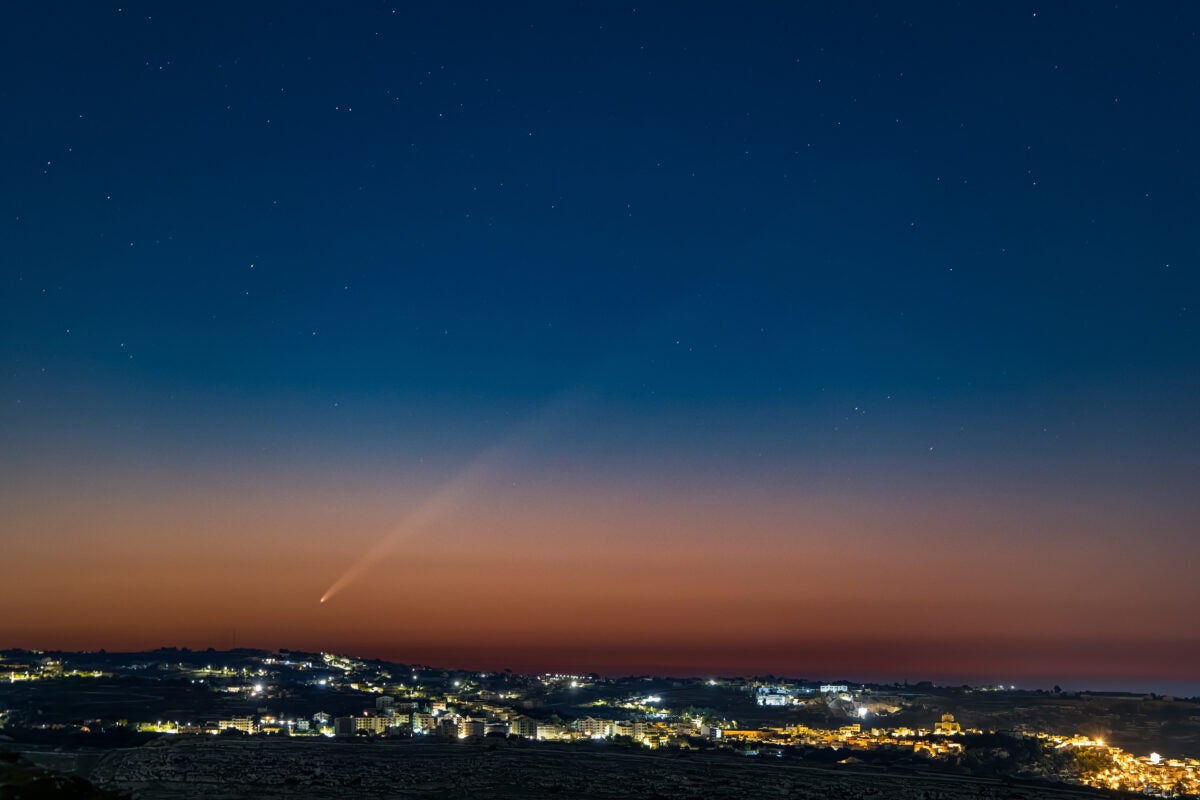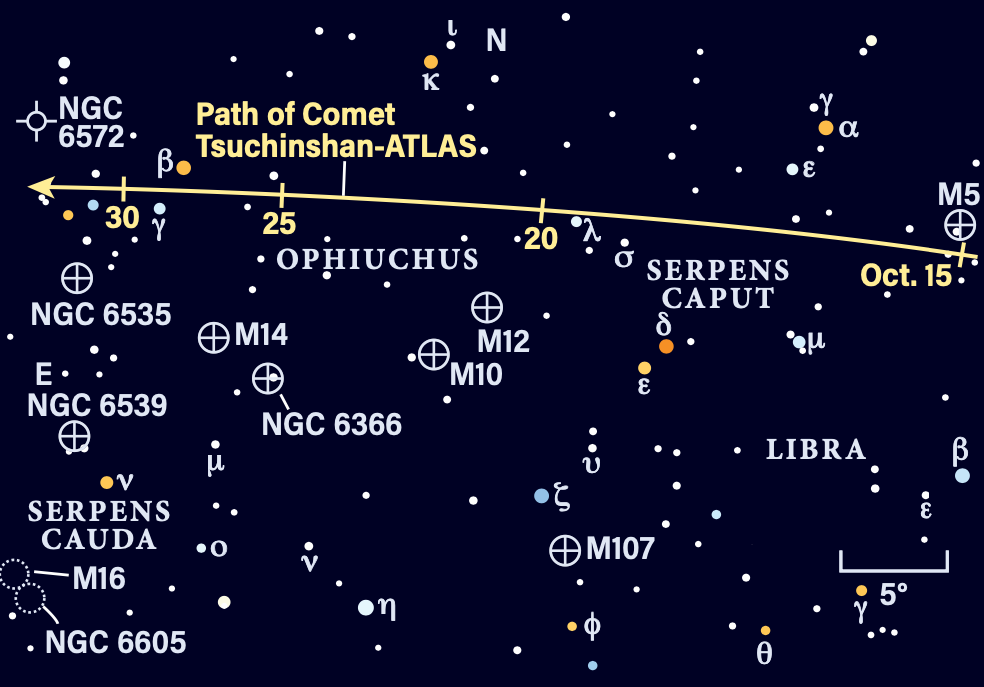
Comet Tsuchinshan-ATLAS, also known by its catalog designation C/2023 A3, is now magnitude 2.2 in the morning sky. But if you’re not an early riser, you can soon rejoice — it will become visible in the evening sky starting Oct. 14.
On that date, the comet will be in the far eastern part of the constellation Virgo. On the 15th, it will have crossed the border into Serpens, and for observers in the Eastern time zone, it will lie a bit more than 1° south of globular cluster M5. If the comet is bright enough, both objects could be viewed simultaneously through binoculars. In the western U.S., Tsuchinshan-ATLAS’ motion will place it slightly southeast of M5.
When you should look for the comet
Comet brightnesses are notoriously difficult to predict, but if the main body of Tsuchinshan-ATLAS holds together, we might be treated to a bright celestial sight. Unfortunately, when to view the comet will be something each observer would be wise to consider for two reasons.
First, there’s the Moon. It will be Full Oct. 17, right in the middle of the best viewing period for Tsuchinshan-ATLAS. After that date, our satellite will rise later each evening, making viewing the comet much easier.
Second, the comet never climbs high in the sky. On Oct. 15, Tsuchinshan-ATLAS will be 16° high in the west one hour after sunset. On the 18th (the night after Full Moon), it will stand a more respectable (and easier to spot) 25° above the horizon.

Where you should look for the comet
Tsuchinshan-ATLAS will move into the constellation Ophiuchus on Oct. 19, and starting on this date the Moon will no longer hinder viewing. An hour past sunset, the comet will be 28° high in the west and will lie quite close to the magnitude 3.8 star Marfik (Lambda [λ] Ophiuchi). Observers are hoping it will be much brighter than the star.
The comet will continue to move through Ophiuchus and, on the 28th, it will lie between two of that constellation’s brightest stars: magnitude 2.8 Cebelrai and magnitude 3.7 Muliphen (Beta [β] and Gamma [γ] Ophiuchi). The stellar pair is separated by 2°. On that night, the comet will stand 40° high in the southwest an hour after sunset.
The prolific comet discoverer David Levy likes to say, “Comets are like cats. They both have tails and it’s hard to predict what they’ll do.” Let’s all hope this comet puts on a great show.
Related: Astronomy magazine’s January 2023 issue: The world of comets









